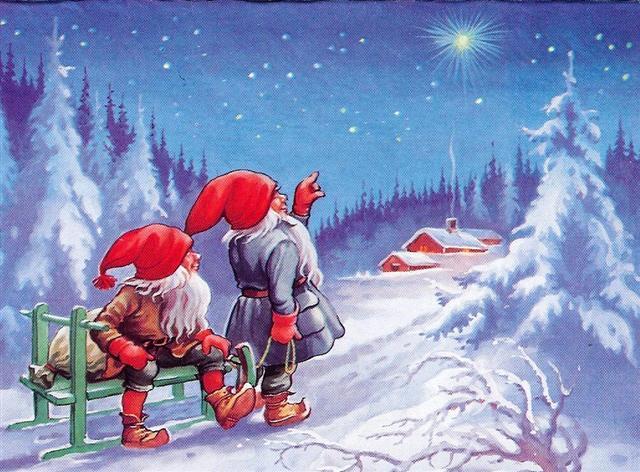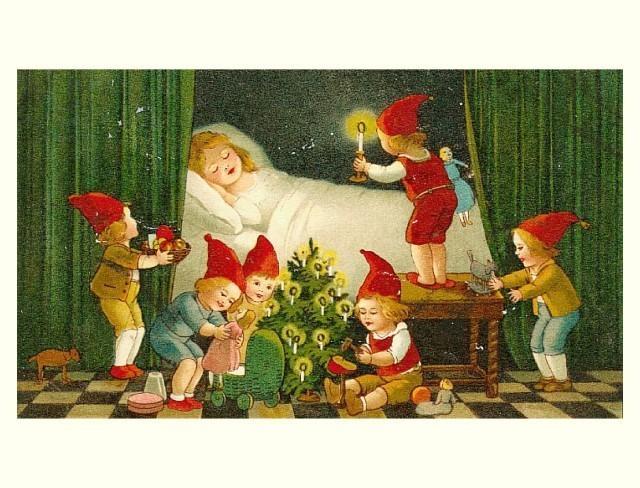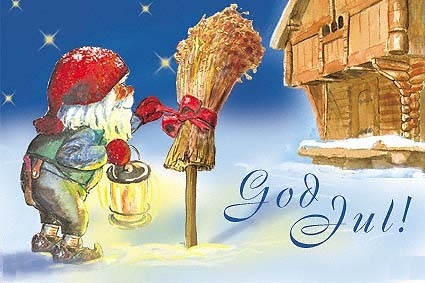Anton's 10th great grandfather, Anders Andriessen Anderson was born in 1585 in Älvdalen (translated into English as Älv Dales, or Älv Valley, or Elf Valley), in central Sweden. The people in this valley speak a language called Elfdalian (the Elf Valley language).
Ancient people from the Älv (pronounced elf) valley are called elves. An elf is a being of Germanic mythology. In medieval Norse mythology, they appear to have been divided into light elves and dark elves, difficult to delineate from the Æsir (gods) on one hand and the dvergar (dwarves) on the other.
In early modern and modern folklore, they become associated with the fairies of Romance folklore and assume a diminutive size, often living underground in hills or rocks, or in wells and springs. 19th-century Romanticism attempted to restore them to full stature, often depicting them as very young, probably adolescent (lack of facial hair on male elves), men and women of great beauty.
From their depiction in Romanticism, elves entered the 20th-century high fantasy genre in the wake of the published work of J. R. R. Tolkien (especially the posthumous publication of his Silmarillion where Tolkien's treatment of the relation of light elves, dark elves, black elves and dwarves in Norse mythology is made explicit).
The English word elf is from the Old English ælf or elf, in reference to a midget, themselves from the Proto-Germanic *albiz which also resulted in Old Norse álfr, Middle High German elbe. *Albiz may be from the Proto-Indo-European root *albh- meaning "white", from which also stems the Latin albus "white" (or Alban, as in Mont Alban)
The earliest preserved description of elves comes from Norse mythology. In Old Norse they are called álfar (nominative singular álfr).
In Scandinavian folklore, which is a later blend of Norse mythology and elements of Christian mythology, an elf is called elver in Danish, alv in Norwegian, and alv or älva in Swedish. The Norwegian expressions seldom appear in genuine folklore, and when they do, they are always used synonymous to huldrefolk or vetter, a category of earth-dwelling beings generally held to be more related to Norse dwarves than elves which is comparable to the Icelandic huldufólk (hidden people).
In Denmark and Sweden, the elves appear as beings distinct from the vetter, even though the border between them is diffuse. The insect-winged fairies in British folklore are often called "älvor" in modern Swedish or "alfer" in Danish, although the correct translation is "feer". In a similar vein, the alf found in the fairy tale The Elf of the Rose by Danish author Hans Christian Andersen is so tiny that he can have a rose blossom for home, and has "wings that reached from his shoulders to his feet". Yet, Andersen also wrote about elvere in The Elfin Hill. The elves in this story are more alike those of traditional Danish folklore, who were beautiful females, living in hills and boulders, capable of dancing a man to death. Like the huldra in Norway and Sweden, they are hollow when seen from the back.
Ancient people from the Älv (pronounced elf) valley are called elves. An elf is a being of Germanic mythology. In medieval Norse mythology, they appear to have been divided into light elves and dark elves, difficult to delineate from the Æsir (gods) on one hand and the dvergar (dwarves) on the other.
In early modern and modern folklore, they become associated with the fairies of Romance folklore and assume a diminutive size, often living underground in hills or rocks, or in wells and springs. 19th-century Romanticism attempted to restore them to full stature, often depicting them as very young, probably adolescent (lack of facial hair on male elves), men and women of great beauty.
From their depiction in Romanticism, elves entered the 20th-century high fantasy genre in the wake of the published work of J. R. R. Tolkien (especially the posthumous publication of his Silmarillion where Tolkien's treatment of the relation of light elves, dark elves, black elves and dwarves in Norse mythology is made explicit).
The English word elf is from the Old English ælf or elf, in reference to a midget, themselves from the Proto-Germanic *albiz which also resulted in Old Norse álfr, Middle High German elbe. *Albiz may be from the Proto-Indo-European root *albh- meaning "white", from which also stems the Latin albus "white" (or Alban, as in Mont Alban)
The earliest preserved description of elves comes from Norse mythology. In Old Norse they are called álfar (nominative singular álfr).
In Scandinavian folklore, which is a later blend of Norse mythology and elements of Christian mythology, an elf is called elver in Danish, alv in Norwegian, and alv or älva in Swedish. The Norwegian expressions seldom appear in genuine folklore, and when they do, they are always used synonymous to huldrefolk or vetter, a category of earth-dwelling beings generally held to be more related to Norse dwarves than elves which is comparable to the Icelandic huldufólk (hidden people).
In Denmark and Sweden, the elves appear as beings distinct from the vetter, even though the border between them is diffuse. The insect-winged fairies in British folklore are often called "älvor" in modern Swedish or "alfer" in Danish, although the correct translation is "feer". In a similar vein, the alf found in the fairy tale The Elf of the Rose by Danish author Hans Christian Andersen is so tiny that he can have a rose blossom for home, and has "wings that reached from his shoulders to his feet". Yet, Andersen also wrote about elvere in The Elfin Hill. The elves in this story are more alike those of traditional Danish folklore, who were beautiful females, living in hills and boulders, capable of dancing a man to death. Like the huldra in Norway and Sweden, they are hollow when seen from the back.




